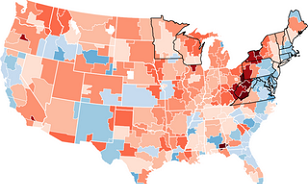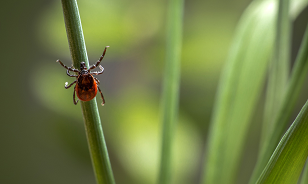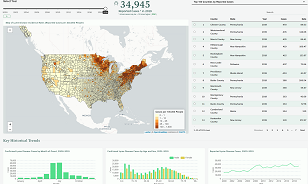
Welcome to the Johns Hopkins Lyme and Tickborne Diseases Dashboard
Harnessing the Power of Geography in Tickborne Diseases Research
Read Our Story “Geography, Ticks and You”An initiative led by the Johns Hopkins Spatial Science for Public Health Center, in collaboration with the Johns Hopkins Medicine Lyme Disease Research Center and the Johns Hopkins Lyme and Tickborne Diseases Research and Education Institute
What’s New

Identifying the Geographic Leading Edge of Lyme Disease Using Google Health Trends
New research published in PLOS ONE.
Learn More
Johns Hopkins Magazine: ‘A tracker for tickborne illness’
Johns Hopkins Magazine features the dashboard in its Spring 2022 issue.
Learn MoreWhy We Should Care
476,000
CDC estimates that approximately 476,000 Americans are diagnosed and treated for Lyme disease each year, but less than a tenth of these cases are officially reported.
50+
Lyme disease cases are increasing, and positive tests have been observed in all 50 US states. But Lyme disease is not just a US problem. Lyme and other tickborne diseases are found worldwide, including Canada and parts of Europe, Asia, and Africa.
Source: Quest Diagnostics, CDC
$1.3 billion
Patients diagnosed with Lyme disease on average have nearly $3,000 higher annual health care costs, which adds up to a $712 million – $1.3 billion burden on the US health care system each year.
$1,070
Lyme disease is a major, global vector-borne disease, but research for improved prevention, diagnosis and treatment lags other diseases. Federal funding per new reported case of Lyme disease ($1,070) is a fraction of that for HIV/AIDS ($97,648) and hepatitis C ($47,522).
Geography,
Ticks and You
Discover why tickborne diseases are a growing public health threat and why aspects of geography, including climate change, land use, and ecology matter for tickborne disease risk.
Data
Explorer
Use our interactive Data Explorer to visualize tickborne disease-related maps and download the data for further exploration. Our innovative tool is designed to inspire research and scientific collaboration.
